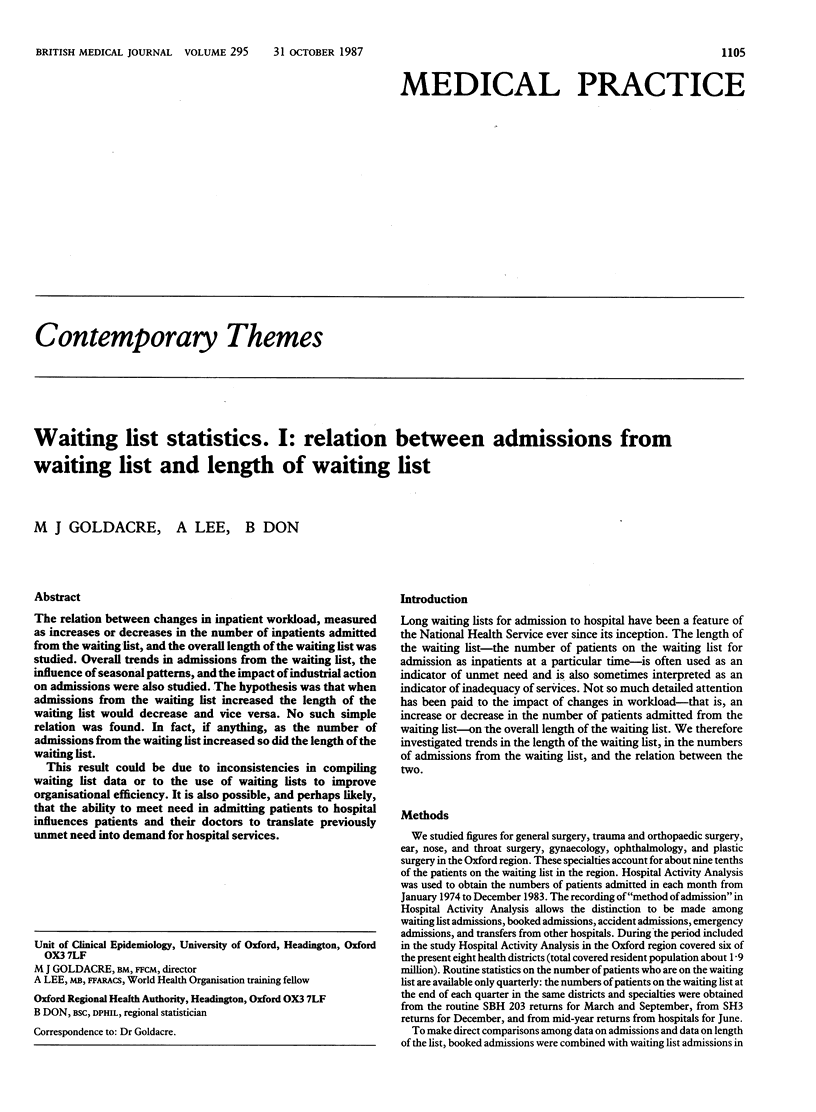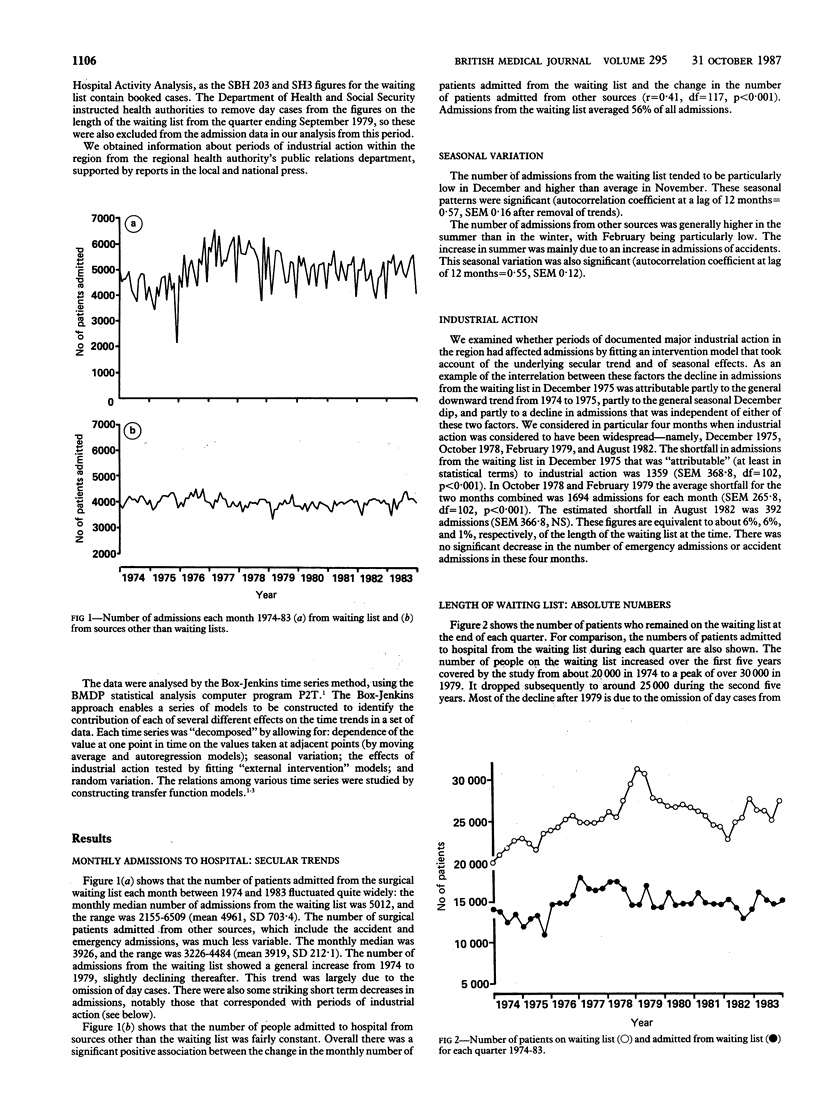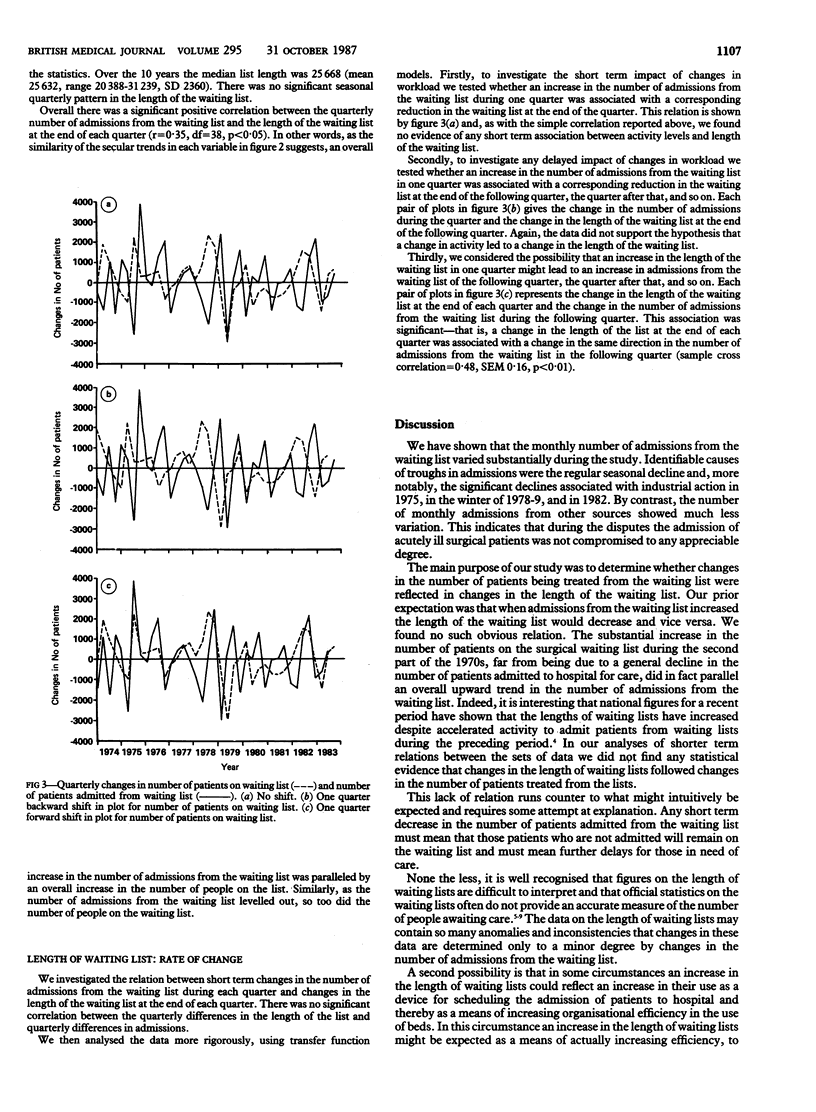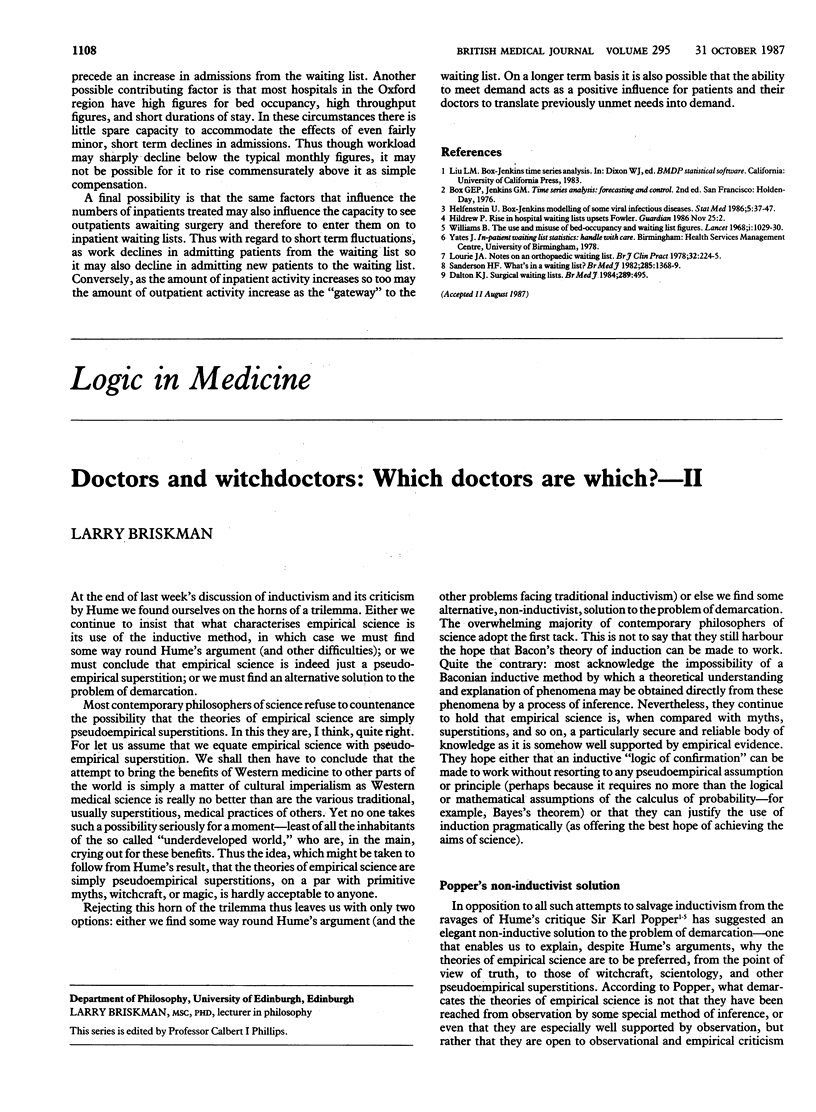Abstract
The relation between changes in inpatient workload, measured as increases or decreases in the number of inpatients admitted from the waiting list, and the overall length of the waiting list was studied. Overall trends in admissions from the waiting list, the influence of seasonal patterns, and the impact of industrial action on admissions were also studied. The hypothesis was that when admissions from the waiting list increased the length of the waiting list would decrease and vice versa. No such simple relation was found. In fact, if anything, as the number of admissions from the waiting list increased so did the length of the waiting list. This result could be due to inconsistencies in compiling waiting list data or to the use of waiting lists to improve organisational efficiency. It is also possible, and perhaps likely, that the ability to meet need in admitting patients to hospital influences patients and their doctors to translate previously unmet need into demand for hospital services.
Full text
PDF



Selected References
These references are in PubMed. This may not be the complete list of references from this article.
- Helfenstein U. Box-Jenkins modelling of some viral infectious diseases. Stat Med. 1986 Jan-Feb;5(1):37–47. doi: 10.1002/sim.4780050107. [DOI] [PubMed] [Google Scholar]
- Lourie J. A. Notes on an orthopaedic waiting-list. Br J Clin Pract. 1978 Aug;32(8):224–225. [PubMed] [Google Scholar]
- Sanderson H. F. What's in a waiting list? Br Med J (Clin Res Ed) 1982 Nov 6;285(6351):1368–1369. doi: 10.1136/bmj.285.6351.1368. [DOI] [PubMed] [Google Scholar]
- Surgical waiting lists. Br Med J (Clin Res Ed) 1984 Aug 25;289(6443):495–496. doi: 10.1136/bmj.289.6443.495-c. [DOI] [PMC free article] [PubMed] [Google Scholar]
- Williams B. The use and misuse of bed-occupancy and waiting-list figures. Lancet. 1968 May 11;1(7550):1029–1030. doi: 10.1016/s0140-6736(68)91128-8. [DOI] [PubMed] [Google Scholar]


